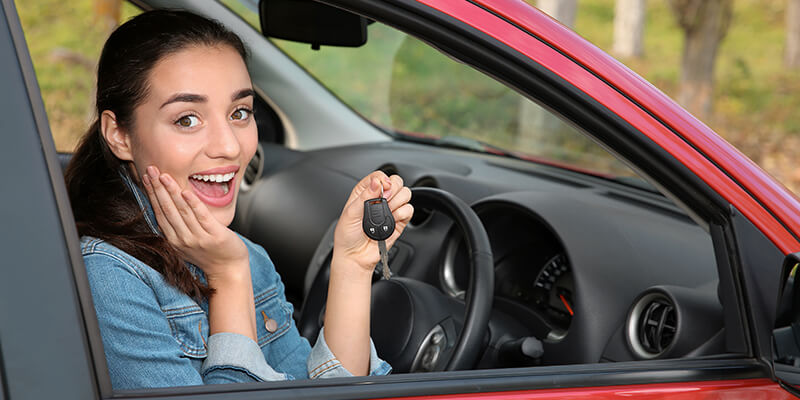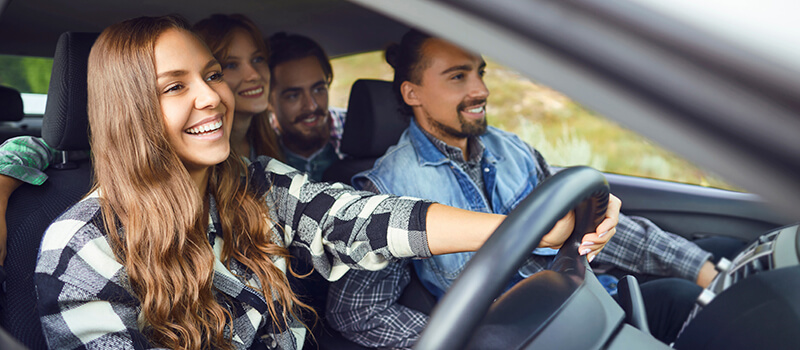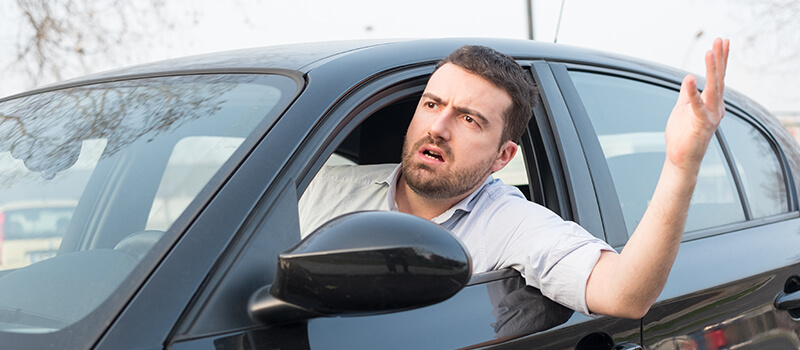Driving alone for the first time after passing your driving test can be a scary thought. Throughout your time learning to drive you’ve had the comfort of your driving instructor sitting next to you, knowing that if you made a mistake, your driving instructor or family member/ friend was there if you needed them. It’s normal to feel apprehensive and nervous about driving alone for the first time; there’s no one there to tell you what to do or step in if you make a mistake.

First time driving by yourself
The first time driving by yourself is a huge step in independence and can be scary. You may question if you’re ready and delay the first drive by yourself. However, if you’ve passed your driving test, have faith in yourself. An experienced and highly trained driving examiner has seen you drive and deemed that you are a safe and competent driver. The first time driving by yourself is a momentous and exciting occasion, everything you have worked for during your driving lessons in Kettering has been building up to this moment, enjoy the freedom!
Important things to note before driving alone for the first time
You’ve finally passed your driving test, bought your first car and sorted out the essential legal stuff such as road tax and car insurance. You’re now ready to head out and face the roads alone for the first time. There are some important things to note before driving alone for the first time to ensure you stay calm and that the drive goes smoothly.
- Comfort is key
- Use P-Plates
- Hold off from taking your friends out for a while
- Drive during off-peak times
- Avoid all distractions
- Don’t be intimidated by other drivers

Comfort is key
Before you go anywhere, it’s essential to sit in your car while stationary and get yourself comfortable. You’re going to be spending a lot of time in the driving seat, so comfort is key. You will need to adjust your seat positioning and mirrors to suit your height and build and make sure you can see correctly.
You will need to adjust both your interior and exterior mirrors to a position that allows you to see as much of your surroundings as possible. Your interior mirror needs to be angled so that you can see the entire scene from your rear window. Exterior side mirrors should be angled so that you can see a small amount of the side of your car. The horizon, which is the point the road disappears into the distance, should be at the centre of your side mirrors.
When adjusting your seat, you should test your position by pressing down on each pedal in a variety of seating positions to see which one feels most comfortable, make sure the engine is switched off for this. Sit up straight and move your seat backwards and forwards until you can easily push the pedals all the way down without having to move your body, only bending and extending your legs to press the pedals. Your heel should be on the floor, using the balls of your feet to press the pedals.

Use P-Plates
Displaying P-Plates on your car during your first drive alone lets other drivers know that you are a new driver and to be more cautious and forgiving of you making mistakes. You are not legally obliged to display P-Plates after passing your driving test, but many new drivers choose to do so as it can take some of the pressure off.
There are no time limits on displaying p-plates on your car, and you can leave them on for as long as you want or until you feel comfortable driving without them. You can also choose to start displaying P-plates at any time after you’ve passed. If it’s been a month since you’ve passed and you’re still struggling with driving nerves and other drivers, you may decide to try p-plates to see if they help.

Hold off from taking your friends out for a while
We know that you’re probably eager to pick up your friends and show off your new driving skills by taking a road trip, we suggest that you hold off from taking your friends out for a while. Having your friends with you during your first drives alone can be distracting and add unnecessary pressure to you, which could cause you to make more mistakes.
Instead of piling up the car with your friends and going for a long drive straight away, start with short and easy journeys. You could drive around the block for a while to get used to your car and build up some confidence before moving onto busier main roads.

Pick off-peak times
Pick off-peak times for your first few trips if possible, this will give you time to get used to the controls and driving in general. During rush hour, the roads are hectic, and you will be required to do lots of stopping and starting as well as moving in slow-moving traffic, which will require effective clutch control. If you have not had adequate time to practice and get used to the biting point in your new car, this situation could be stressful, especially if you stall the car in traffic. By practising during quieter off-peak times, you will be less stressed out by other vehicles on the road, and you will be able to take your time.

Avoid all distractions
We suggest that you avoid all distractions, such as playing loud music or eating food while driving, at least until you are more experienced and comfortable with driving.
When you’re getting used to a new car, one of the most effective ways you can judge the biting point and tell when to change gears is from the sounds the car makes. The clutch will make a juddering noise when it is too high, and the engine will become louder to signal you need to change gears. Playing music will mean you are unable to hear these helpful signs, which is why it is best to avoid playing music altogether, at least to begin with. When you start to feel more confident and are ready to listen to music while driving, you should use a hands-free device and invest in a mobile phone holder. There are strict laws regarding using a phone while driving, you should never use your phone when driving, even if it is just to change a song. If you are caught using a mobile phone while driving, you will be slapped with 6 points on your licence which could cause you to lose your licence in your first year of driving.

Another common distraction for drivers is eating or drinking while driving. Although there aren’t any specific laws regarding eating or drinking, if it affects your driving, you can still face the consequences. For example, if you’re eating toast on the way to work in the morning and having one hand on the steering wheel causes you to swerve, you could be pulled over by the police. Swerving is classed as bad lane discipline which falls under careless driving.
Don’t let other drivers intimidate you
Last but not least, don’t other drivers intimidate you. Unfortunately, there are always going to be drivers on the road who are impatient and think they own the road. These drivers will tailgate you to try and intimidate you into driving faster or going at a junction when you didn’t feel comfortable. Our best advice when dealing with these drivers is to ignore them as best you can, as long as you are sticking to the rules and driving safely, you don’t need to worry about what they are doing or what they are trying to get you to do. Remember it’s highly unlikely you will ever see that driver again, so don’t let them get to you.

Practice makes perfect
You have passed your driving test, so you are more than capable of driving as a safe and confident driver. You may have heard more than one person say that the real learning starts when you pass your driving test and experience the roads solo. Practice makes perfect, and the more driving you do alone, the more experienced and comfortable you will become.
